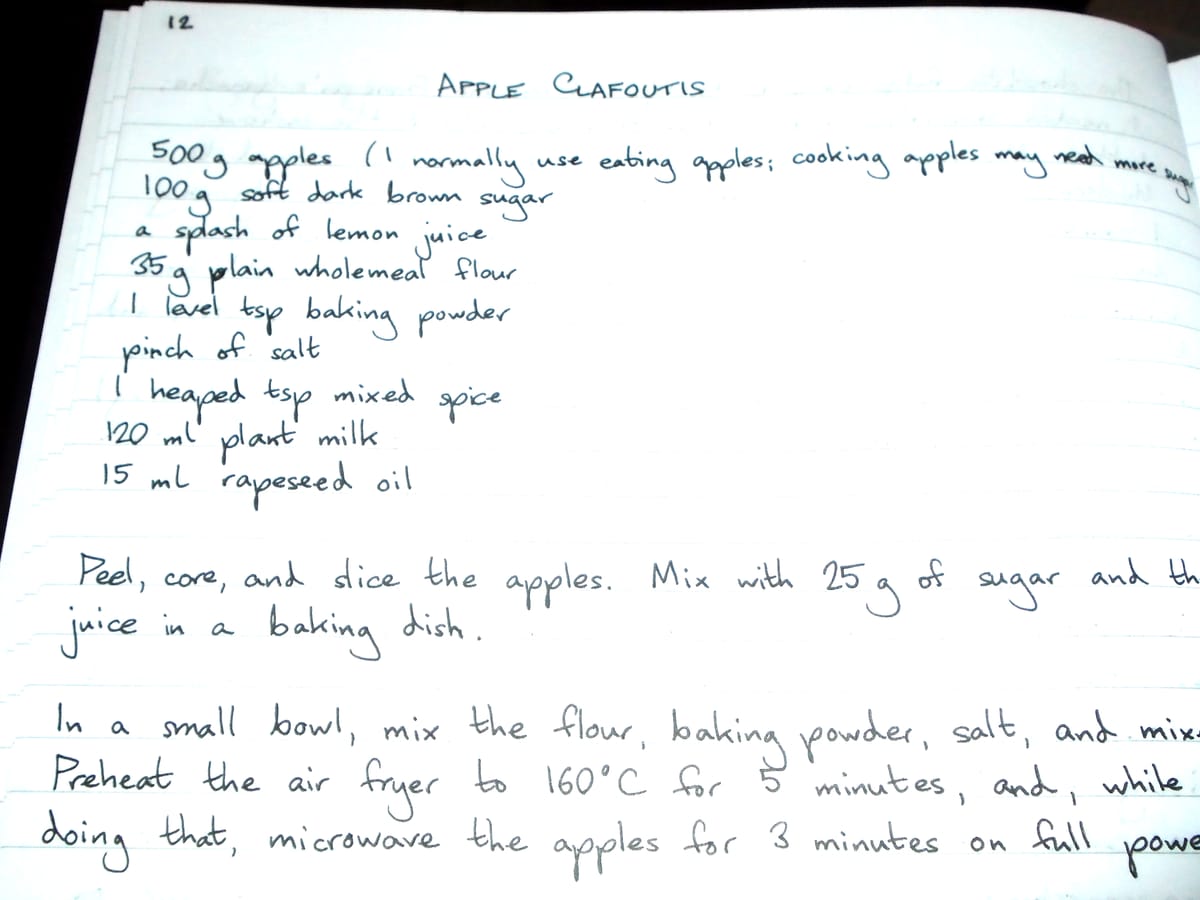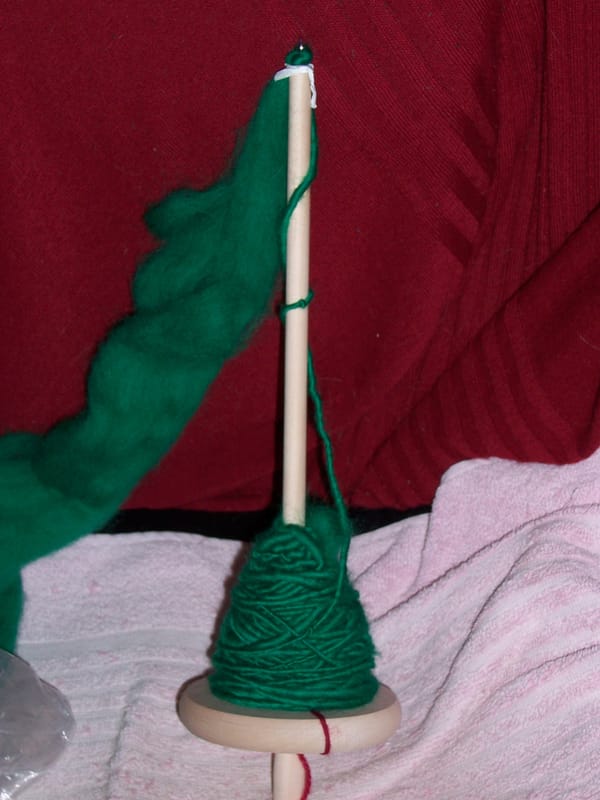Tested to exhaustion

A while ago I posted about Finnegan's Cake. This is... similar, only different, and worse. But it does all end well!
At about the same time as I bought the air fryer, I also bought a recipe book from eBay. It was, specifically, a vegan air fryer recipe book; as a matter of fact I bought two, but the other one never turned up, so I have no idea what it's like. But the one that did arrive turned out to be American, and I have to say I wouldn't have bought it if I had known only that much.
Don't get me wrong. I have nothing at all against Americans. If you're reading this and you're American, I am absolutely cool with you. You just go ahead and bake however you like. Use degrees Fahrenheit and cups and tablespoons and whatever floats your boat. It's no skin off my nose. Just... please, for the love of all that squeaks, don't expect me to do it.
I am normally twitchy about marking books with so much as a pencil, but this time I went through it with my customary black rollerball. Twice. The first time, I converted all the degrees Fahrenheit to degrees Celsius, which was the easy bit. The second run-through was a good deal harder, because I needed to convert all the volume measurements, mostly to weights. Liquids were fine. One US cup of liquid is 240 ml. It doesn't matter what the liquid is. But there is a huge difference in weight between, say, one US cup of dried mushrooms and one US cup of uncooked rice. So I went looking online, and I found this site, which was a great help... up to a point.
The basic principle is great. You input the measurements you want to convert from and to, and then there's quite a big drop-down list of various foodstuffs so that you can convert from volume measurements to weight measurements (or the other way, if you're in the USA). There's quite a long list of measurements you can use, which is helpful when you're considering things that are measured in spoonfuls. (US spoons are slightly, but consistently, smaller than ours.) The list of foods, however, has some curious omissions, so you have to take a guess and substitute whatever food seems to be closest in density to the one under consideration; also, some of them I've never heard of (anyone know what Deaf Smith flour is, for instance? I tried looking it up online but drew a blank). Oh, and the results are given to six decimal places, which is ludicrous. Unless you have actual scientific equipment in your kitchen, you can't even measure to six decimal places, and the amount of (say) flour that will fit in a US cup is going to vary by several grammes depending on how closely packed it is. When converting, even for the smallest amounts I'd round to the nearest gramme, and for larger amounts in rough proportion.
Once all that work was complete, I started trying the recipes. I think it's worth saying that, although they're all supposed to have been tested, I have not yet found one that works first time so far; so I am not entirely sure what is going on here, but as usual I'm looking for patterns in the data, and one of them seems to be that I normally need to cook things more slowly (often much more slowly) than the recipe specifies. That, at least, could be explained by different makes of air fryer, but not everything can.
Well, the first recipe I tried was for a pear clafoutis, except that I wasn't going to use pears. I never cook with fresh pears, on the grounds that if they're not ripe I don't quite trust them, and if they are ripe then they are so delicious as they are that it's not possible to improve them by cooking. So I thought to myself, OK, I have some blueberries and raspberries in the freezer, I'll just use those.
The result was not a success. I had never cooked with frozen fruit before, either; my standard practice has always been just to thaw it and eat it, or occasionally to pop it in a smoothie. What I ended up with was more or less a trifle without the custard - undoubtedly delicious, but not by any stretch of the imagination a clafoutis. It was pretty clear that it would be much less runny if I used apples, so I bought a bag of "wonky" apples (I don't know by whose standards they were wonky, but certainly not by mine) and tried again.
Well, this time it was slightly burnt on top but still runny in the middle, and it wasn't the fruit but the batter. I would say it had cooked very unevenly, but that would not encompass the full weirdness of the situation; in the middle, it actually hadn't cooked at all. One of the joys of vegan cooking is that if something like that happens, the result is still edible, because you're not using eggs; so I ate it, and it didn't taste bad, but, again, not a clafoutis. Further work was needed.
For the next attempt, I took the temperature down quite a way and cooked it for a lot longer. That was better, but still not great. The batter was just about cooked in the middle but now decidedly burnt on top.
Finally, I hit on the solution. If in doubt, put on your science geek hat. If the batter wasn't cooking evenly, then what must be happening was that the heat capacity of the apples was much greater than that of the batter; and that's just a fancy physics term which tells you that the apples need heating a lot more than the batter to get to the same temperature. So what I needed to do was... preheat the apples. I reckoned if I nuked them in the microwave for three minutes (which is a highly efficient way of getting heat into apples) and then poured the batter on top, the batter would get the chance to cook evenly, rather than being heated on top but kept cool underneath by the apples.
I am most delighted to tell you that worked; and, without further ado, I present the finished recipe. (Hat tip to the helpful Rob from Ghost Support, who explained how to override that automatic blank line.)
Apple Clafoutis
500 g apples (I normally use eating apples; cooking apples may need more sugar)
100 g soft dark brown sugar
a splash of lemon juice
35 g plain wholemeal flour
1 level tsp baking powder
pinch of salt
1 heaped tsp mixed spice
120 ml plant milk
15 ml rapeseed oil
Peel, core, and dice the apples. Mix with 25 g of sugar and the lemon juice in a baking dish.
In a small bowl, mix the flour, baking powder, salt, and mixed spice. Preheat the air fryer to 160 C for 5 minutes, and, while you are doing that, microwave the apples for 3 minutes on full power.
Add the plant milk, oil, and remaining 75 g of sugar to the flour mixture, and mix till a smooth batter forms. Pour the batter over the apples, and bake for 35 - 40 minutes. Serve hot or cold.




